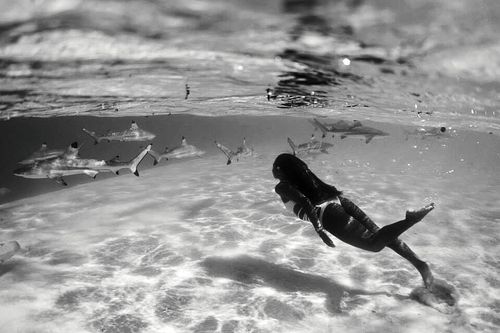Taxonomy
The blacktip shark was first described by Valenciennes in Muller & Henle (1839) as Carcharias (Prionodon) limbatus. It has also appeared in the literature as Carcharias (Prionodon) pleurotaenia, Carcharias microps, Carcharias (Prionodon)muelleri, Carcharias maculipinna, Carcharias ehrenbergi, Carcharias aethlorus, Gymnorrhinus abbreviatus, Carcharias phorcys, and Carcharhinus natator. The currently valid scientific name is Carcharhinus limbatus (Müller and Henle 1839). The genus name Carcharhinus is derived from the Greek "karcharos" = sharpen and "rhinos" = nose. The species name "limbatus" originates from Latin, meaning bordered in reference to the black markings on its fins.
Common Names
The blacktip shark gets its name from its distinctive black markings on the tips of its fins. It is also known as blackfin (Guam, Micronesia, Trinidad and Tobago), black-tipped (Papua New Guinea), small blacktip (Cuba, Leeward Islands), and spot-fin ground shark (UK).
Geographical Distribution
Blacktip sharks are cosmopolitan in tropical to subtropical coastal, shelf, and island waters. In the Atlantic during their seasonal migration they range from Nova Scotia to Brazil, but their center of abundance is in the Gulf of Mexico and Caribbean Sea. They occur throughout the Mediterranean and along the central West coast of Africa. In the Pacific they range from Southern California to Peru, including the Sea of Cortez. They occur at the Galapagos Islands, Hawaii, Tahiti, and other South Pacific Islands, to the North coast of Australia. In the Indian Ocean they range from South Africa and Madagascar up to the Red Sea, Persian Gulf, throughout India's coast, and east to the coast of China.
World distribution map for the blacktip shark
Habitat
The blacktip shark inhabits inshore and offshore waters, but is not a truly pelagic species. They are often seen nearshore around river mouths, bays, mangrove swamps, and in other estuaries, though they do not penetrate far into freshwater. They can be found offshore and over deep waters near coral reef dropoffs, but primarily stay in the upper 100 feet (30 m) of the water column.
A young blacktip shark cruises the Caribbean shallows
© Jeremy Stafford-Deitsch


